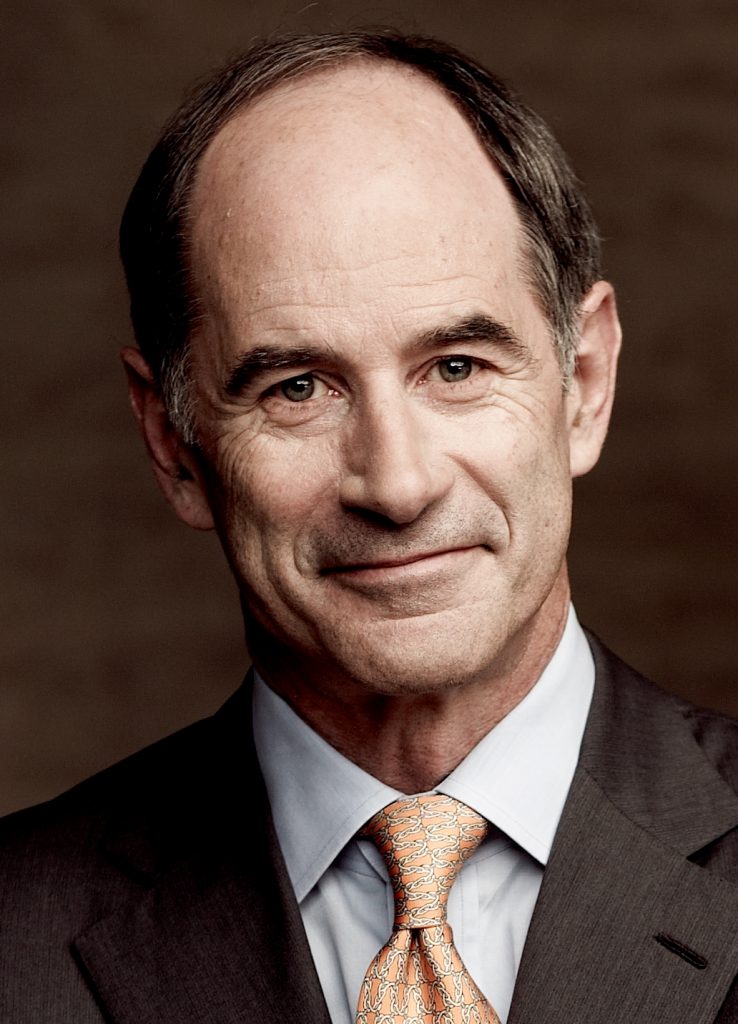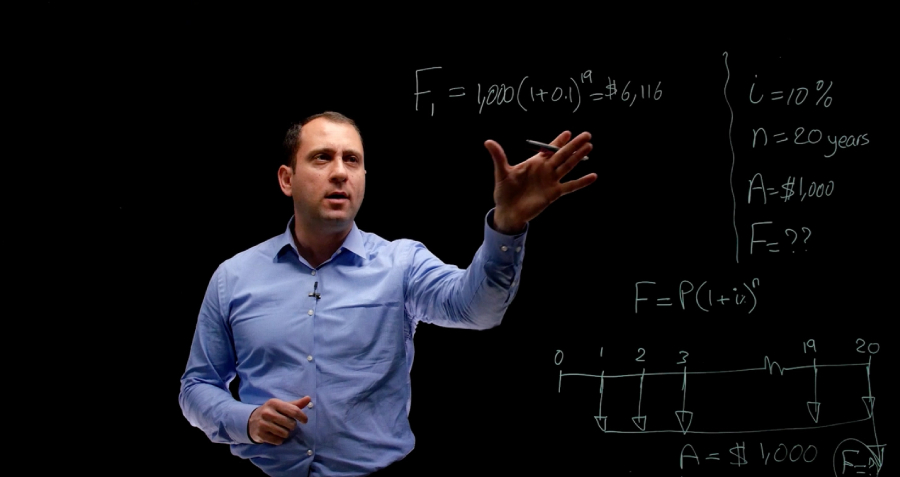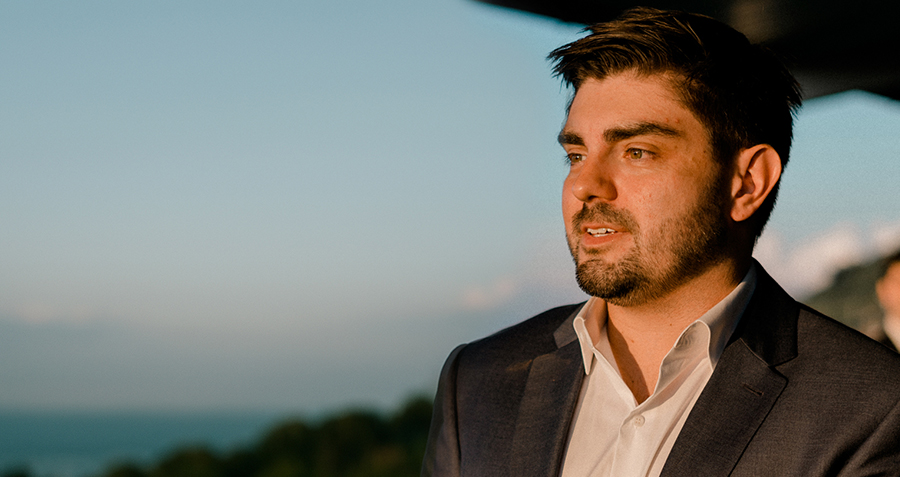
Roger Martin, former dean of the Rotman School of Management, talks strategy and creative thinking in business
Roger Martin is the former dean of the Rotman School of Management at the University of Toronto, where he still teaches. As a corporate strategist, consultant and academic, he originated the concepts of integrative thinking and design thinking, with companies such as Procter & Gamble and Lego putting them into practice. He is the author of a number of best-selling books, including The Opposable Mind and Playing to Win: How Strategy Really Works. Martin is also the Director of the Martin Prosperity Institute, which researches long-term income inequality and the stagnation of median incomes in the United States.
In this interview, Martin discusses the decline of strategy as a corporate art, his strategic-thinking paradigms, as well as practical application of those ideas.
Q. You’ve spent decades in corporate strategy. How has corporate strategy changed along with the changing world economy?
A. It has changed in a number of ways. One, I would say, is that the bloom is a bit off the rose of strategy. I’m a strategist, but I have to say the enthusiasm within corporations for strategy was arguably higher in the 1980s and 1990s than it is today. And that’s, I think, because strategy became too much of a dry

analytical, quantitative exercise that CEOs said, well I have to do this, and I know the board wants a strategy but I’m not sure how much value this has to me. And then there’s the whole critique that success is all about execution and not about strategy. I think that critique is vapid, in the sense of this notion that a mediocre strategy well-executed will beat a great strategy poorly executed. But how do we know that there is a great strategy that was poorly executed? What is our mechanism for figuring that out? And the answer is there is none. So it is fair to say that what has changed is that there are lots of CEOs who question the true value of strategy.
Two: I think a bunch of CEOs have fundamentally misinterpreted what Henry Mintzberg said about emergent strategy. Henry was an early critic of the technocratic approach to strategy. What he said is that if you look back after the fact, not many things happen as you would expect, and strategy actually changes on the basis of the world evolving. It doesn’t necessarily evolve the way you predict. So strategy has to be emergent. Many CEOs read that to imply “don’t have a strategy, just do whatever comes along,” which is not at all what he was saying. They think he meant to always wait and then react. I think that’s a losing proposition.
And then the last would be the emergence of the tech sector of being so dominant and this notion that in the tech sector you can’t plan anything because the cycles are too short. So I think those things are all a challenge to strategy.
I would say, for what it’s worth, that strategy as a way of thinking has become a bit of a lost discipline.
Q. How do we get it back?
A. I don’t know entirely. Honestly, I shake my head a little bit. I personally try to do it. I work for about a dozen CEOs of big corporations around the world on strategy and interestingly enough, lots of them have strategy departments, but not many people in them are actually practiced in strategy, even though many are from large consulting firms. But it’s fun. They are very smart and when I teach them tools and techniques for making strategy choices, they are excited by it, and have a real appetite for becoming better strategists. The problem is that strategy just isn’t taught or practiced enough anymore.
What I have the highest hope about is the development and embrace of design in business, for what it’s worth. And why that is, is because we have to get away from strategy as planning. Strategy is analyzing what currently exists, and on the basis of that analysis saying, okay this is what we should do.
Q. In your concept of “integrative thinking,” you balance two opposing models, and for a layman, that goes against conventional thinking. How does a decision-maker best deal with conflicting goals?
A. The reason for the model is that it turns out that the executives that make a real difference for their organizations are the ones that don’t accept the notion that when they face an unpleasant tradeoff, that they have to chose either one side or the other. I have to build small hotels, or big city-center convention hotels, for example. Instead they ask: “what is possible to create based on the existence of those two models?” That’s what Four Seasons founder Isadore Sharp did. He said, fair enough, that’s what everyone says are the two opposing choices, but I think there might be other possibilities, and he used his creativity, his imagination, his skill to come up with a better model. That’s what integrative thinking is. It’s not that you continuously say, it might be this, it might be that. But when you are faced with a tradeoff that you know in your heart is not the right tradeoff to make, but there is a better way, you take personal causal responsibility for finding that better way, and that’s what Sharp did at Four Seasons. And that’s how you create huge value as a CEO.
Q. Can you expand on the Four Seasons example?
A. So Sharp said of his first hotel, which was a roadside motor inn, the Four Seasons Motor Hotel, that he loved the intimacy that these motels had. But with 50 to maybe at most 150 rooms at a motel, and low prices, you don’t have the annual revenue necessary to justify building the infrastructure that a business traveler would need. You have maybe a swimming pool, maybe a bar/restaurant but that’s it. He then built a big 1,600-room convention hotel in the middle of the city, and that had every amenity known to mankind—workout rooms, conference rooms, ballrooms, everything a business traveler could want. But he thought it was big, cold and impersonal.
Those were the two models that essentially worked. There were huge chains, Westin, Hilton, Hyatt on one end, and Motel 6, Holiday Inn on the other. Sharp didn’t like either one of those, and instead of choosing one or the other, he asked himself: how can I build a model that would give me the intimacy and comfort of a motel, along with the amenities of a big hotel? His insight was that business travelers don’t like being in luxury hotels. What they miss is home, where their loved ones are, and the office where they can be productive, because they’ve got their productivity infrastructure. He set out to redefine luxury as a service that makes up for the environment you left at home or at the office. His hotels are between 150 and 300 rooms, less than half of the size of a minimum-scale business hotel, that have the intimacy of a motel but thanks to the superior form of luxury, enable Four Seasons to charge such a high price premium that it can afford every amenity necessary to make the hotel outstanding. On that basis he built what is now known as the Four Seasons model, which is a different model than any other in the industry. The hotels are smaller, the service is completely different. It doesn’t attempt to win on grand architecture and décor, but rather a kind of service that makes up for what you left at home or the office.
Q. And what does it take to do integrative thinking?
A. The interesting thing about these integrative thinkers that I’ve found is what they do is they dive deeply into, or fall in love with, each of the existing models to dig out of them the things that are special and wonderful about those models in order to build a new and better model. This is in stark contrast to most people who feel that their job is to choose from among the existing models. They are trained to be very judgmental about models rather than appreciative of models because they see their job as eliminating all but the best model. So when I ask people to do integrative thinking, I tell them that I want them to sequentially fall in love with the two models. Fall in love with the first model. Treat it like it is the only model in the world. Ask only what is great about it. Forget what’s bad about it. After they have appreciated it thoroughly, I tell them to forget about it as if it doesn’t exist anymore and go and fall in love with the other model. That’s not normal decision-making behavior. But it allows them to mine the best elements of each, which provides clues about how to combine those elements to create a new and better model. At that point we give them three ways to search for that integrative solution. Right now, I’m working on another book, in fact, on how to do that.
Q. Another one of your concepts, “design thinking,” again balances two different approaches—intuition versus analysis. Is this technique more about complementing the strengths of each approach, or canceling out the weaknesses?
A. It’s more on the complement side. But this gets to something that Aristotle said. He created the initial rudiments of the scientific method, and in his book Analytica Posteriora he laid out what is cause and effect, and what is science. What people ignore is that he put a warning in the back of the book and then wrote a second book that followed up on the warning. To paraphrase, he said this method is for the part of the world that cannot be other than what it is. For example, if I drop an object it will fall at the same speed now, tomorrow, the next day and forever in all situations.
But he said there’s another part of the world where things can be other than what they are, my relationship with you for example. If I scream and yell at you all the time, we’d have a crummy relationship. If I answer your questions nicely, we’d have a good relationship. There’s a huge part of the world where things can be other than they are, and in this part of the world, the job of humans is to create a future. And he said that the method laid out in Analytica Posteriora is inappropriate and shouldn’t be used for that part of the world.
The part of the world that can be other than it is requires a different thinking process. It requires the imagination of possibilities, and the selection of the one for which the most compelling argument can be made. And so essentially you need both. There’s part of the world where you have to analyze with all your might “what is,” so you can understand “what is” and exploit it. But there’s a whole other part of the world, and for that you need this designerly approach. So they are complements.
If you are going to make computer chips, you have to understand transistors and electricity etc., and those are rules that aren’t going to change. But if you are going to understand how to sell stuff to consumers, you have to understand that they are changing constantly. For them, you need to create the future to be special.
Q. You write books for business leaders, but are any of your ideas applicable to everyday life?
A. I think if you are wondering about your personal career strategy, integrative thinking and design thinking are very applicable. Readers of The Opposable Mind have told me that it has helped their marriage or helped the relationship with their children. So I have come to believe that it offers practical advice for individuals. I’ve often thought about writing a more personal development-oriented book, and I may some day.



















